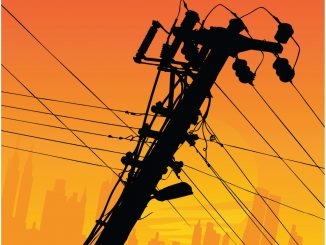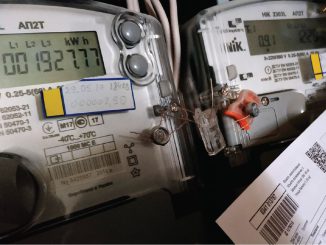
Recent developments in the power sector have centred on technological advancements and the automation of the distribution and transmission network. The sector has been witnessing a host of digitisation initiatives that have been mobilised by both the government and private players. A recent trend has been the digitalisation of substations. While software such as supervisory control and data acquisition (SCADA) has been in use for some time, the complete digitisation of substations is a relatively new concept, which a greater number of utilities and developers are likely to explore going forward.
Need for digital substations
Over the past few years, several technological solutions have emerged that have contributed significantly to enhancing the operational efficiency of utilities and to scaling down costs, making projects more viable. Digital substations are one such solution.
Digital substations offer a range of benefits to utilities. To begin with, they are equipped with advanced software solutions that protect systems from potential cyberthreats, thereby strengthening system security. Next, all the components of the substation are automated, enabling faster implementation of future technological solutions. This ensures that the substation is technologically upgraded at all times. Further, since utilities can track real-time data from substations and remotely control specific functions, it ensures enhanced asset management, which yields both operational and financial benefits. Real-time monitoring of data also reduces outage time and increases reliability.
In addition, digital substations possess backward compatibility, which enables the smooth integration of new communication technology with the utility’s existing systems. Another benefit digital substations is reduced maintenance costs. This is primarily because utilities can monitor and control parameters in real time, thereby reducing the need for periodic maintenance.
Apart from the operational and financial benefits, digital substations have another crucial purpose. Through compact primary equipment and smaller relay rooms, they reduce the substation footprint, thereby allowing utilities to use the remaining space more efficiently, or to rent smaller spaces for the same purpose.
Moreover, setting up digital substations requires replacing copper cables with fibre optic cables, which results in the reduced risk of electrocution and enhanced safety of the personnel on site. Digital substations also entail a lower installation time, since there are fewer panels to install and fewer cables to be pulled, connected and tested.
Introduction of IEC 61850
The concept of digital substations has taken a long time to gain traction in the Indian market. This is primarily due to the lack of industry experience and expertise. Previously, most equipment lacked interoperability, which made the development of digital substations an ordeal. This issue was resolved with the introduction of the IEC 61850 standard, which focused on data modelling in devices and the seamless integration of third-party intelligent electronic devices (IEDs) with peer-level devices. It was the first standard to introduce an object modelling approach using logical node groups and logical nodes as core objects. Such an arrangement enables the IEDs to encompass one or more logical devices that contain data. This data is then made available to the entire digital substation control system in a cohesive manner.
Digital substation architecture
The digital substation architecture comprises several components. The information flow begins from the station bus that facilitates communication between station-level systems like the SCADA gateway and local human machine interface (HMI), and bay-level equipment such as bay controllers and protection relays. The station bus is also equipped with Generic Object Oriented System-wide Event (GOOSE) messaging that enables a smoother information flow. Upon detecting the event, the IEDs use multicast transmission to notify the devices that would be receiving the data. The information needs to be distributed to local devices or remotely stationed control operators in order to visualise the operational status of the substation. In this manner, all components of the digital substation interact with each other to exchange data and communicate in real time.
In terms of the architecture, the biggest transformation has taken place in the way equipment such as switchgear and current and voltage transformers are connected to the control and protection layer of the substation. These were conventionally hard-wired connections that involved using expensive copper wiring. However, now such equipment is connected through optic fibre cable and has embedded sensors that can be processed at source, and can subsequently communicate the data to other devices. Further, digital substations are equipped with digital instrument transformers (DITs), which, unlike their conventional counterparts, can inaccuracy and range issues by eliminating the iron magnetising core. An added advantage of DITs is their low weight that allows different mounting options. Optical current transformers (CTs), Rogowski current sensors and capacitive dividers are amongst the various types of DITs available.
Indian utilities have begun conducting digital substation pilots. A case in point is Power Grid Corporation of India Limited (Powergrid), which commissioned the first substation based on the IEC 61850 standard in 2007. The utility’s first pilot using the IEC 61850-based process bus was commissioned at the Bhiwadi 400/200 kV substation in 2014. As of 2017, about 118 substations with IEC 61850-based automation systems have been commissioned by it.
With the adoption of IEC 61850, some of the key benefits to the transco have been advanced diagnosis, enhanced safety, lowering of its environmental footprint, and ease of integration of different monitoring and control devices with a common system. That being said, the utility encountered several issues during its initial installations. The augmentation of substations was a major challenge since the utility had IEDs from different vendors and thus, integrating them to interoperate was both an economical and technical problem. In some cases the control command from the HMI to the bay controllers of different vendors did not work, whereas in other cases, the IEDs had subscription issues. The utility also faced the obstacle of ensuring Windows version compatibility with the new version of IEDs. The lack of coordination between the IEDs and GOOSE also added to the difficulties. The unavailability of devices was another pressing issue. Non-availability of proper logical nodes and sufficient ports for IEDs had an impact on the pace of installation and subsequent operations of the entire network.
Another utility that has experimented with digital substations is the Gujarat Energy Transmission Corporation (GETCO). The utility conducted pilot installations of 220 kV optical CT at its Lunawada and Jambuva substations. The optical CTs were installed on the existing bus post insulator structure and thus no separate foundation was required. The utility also conducted a pilot for the installation of an analog merging unit and an intelligent control unit for circuit breakers and isolators in one line bay at the 400 kV Asoj substation. The utility is also in the process of implementing a fully digital substation with a process bus line monitoring unit to assess the maximum line capacity; a fault current limiter to reduce the fault current without affecting power system stability and reliability; an SF6 switchgear with SCADA at the 11 kV level to optimise the manpower for operations; and a STATCOM (static synchronous compensator) for dynamic reactive power.
The way forward
The initiatives in the segment indicate that digital substations as a concept are establishing a firm presence in the market. Recently, Technopark, the largest IT park in India, located in Kerala, set up a 110 kV digital substation with the aim of ensuring round-the-clock power supply for the 350 companies on its premises.
There is a need to adopt the digital substation concept not just because of its associated benefits, but also to ensure that all systems in the sector mature at the same technological pace, thereby leading to the creation of an advanced and harmonised power network. As the sector witnesses new technological developments, digital substations are also expected to mature further. However, for now, this is an important first step for the country.




